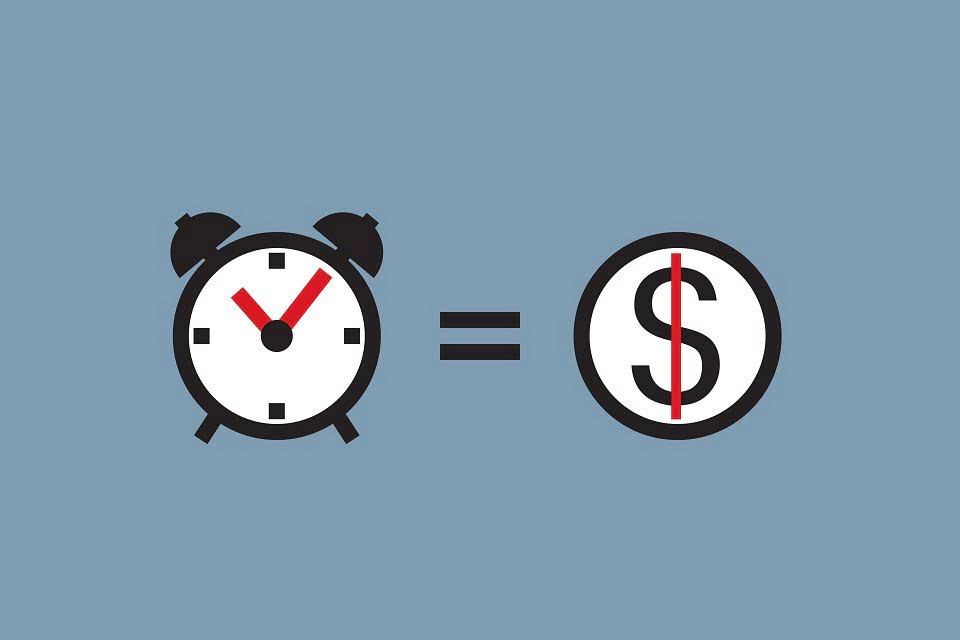Difference Between Product Cost and Period Cost with Comparison Chart

Indirect expenses are often referred to as overhead costs or manufacturing overheads. The cost of labor is unique in that it can be both a product and period cost. This depends on whether the labor is directly related to production or not – a factory worker’s wages would be product costs, while a company secretary’s wages would be period costs. B. Travel for salespeople and advertising are period costs, but they are selling costs and not administrative (a. & c.) Rent at the manufacturing facility is a product cost and is manufacturing overhead. For proper financial reporting and to successfully determine revenue, pricing strategies, and cost control methods, it is necessary to distinguish between product costs and period costs.
What Are Business Quarters and How Do They Work?
- Instead, period costs will be referred to as period expenses since they will be reported on the income statement as selling, general and administrative (SG&A) or interest expenses.
- When preparing financial statements, companies need to classify costs as either product costs or period costs.
- It is essential to understand these differences to accurately analyze a company’s financial performance.
- Direct materials refer to the raw materials used in the production process, such as wood for furniture or fabric for clothing.
- Now that you have a clear understanding of these two types of costs, let’s move on to some other key points.
- In summary, product costs are recognized in the balance sheet before being expensed in the income statement.
The cash may actually be spent on an item that will be incurred later, like insurance. It is important to understand through the accrual method of accounting, that expenses and income should be recognized when incurred, not necessarily when they are paid or cash received. The $10 direct materials would be a debit to cost of goods sold (increasing) and a credit to inventory (decreasing). Understanding the distinction between product costs and period costs is fundamental in cost accounting, as it helps businesses accurately track expenses and evaluate financial performance. These two cost categories are critical for allocating expenses between production-related activities and general business operations. When setting prices for products or services, businesses must ensure that all costs, including period costs, are covered to maintain profitability.
The Role of Period Costs in Revenue Recognition

Therefore, period costs are only recognized as expenses in the income statement. By understanding the differences between product and period costs, businesses can more accurately manage their expenses and assess profitability. The immediate expensing of period costs has a direct impact on a company’s profit and loss statement. Since these costs are deducted from revenues within the same period they are incurred, they can significantly affect the net income reported.
Efficiency of running the business
They don’t naturally appear on the balance sheet as they are expense accounts. We refer to these costs that are not directly related to the production of goods as period costs. For a business that does retail or wholesale, its product costs will include the cost of the supplies it purchased. If the business incurs any other costs to bring its goods to market (e.g. transportation, freight, etc.), then those are product costs too. Basically, any costs that a retailer or wholesaler incurs to acquire the goods that it will sell are product costs. Depending on the type of business, the costs/expenses that are product costs will differ.

So, let’s get started on our journey to unravel the complexities of product vs period costs. Direct material costs are the costs of raw materials or parts that go directly into producing products. For example, if Company A is a toy manufacturer, an example of a direct material cost would be the plastic used to make the toys. This article looks at meaning of unearned revenue and main differences between the two such cost bifurcations – product cost and period cost. Period costs are like the backstage crew ensuring the business show runs smoothly. But they’re ongoing expenses necessary for the daily operation of the entire bakery.

Manufacturing overhead
- For example, if a business rents space to house its accounting function, then it will incur the cost of rent whether it produces goods or not.
- Period costs are based on time and mainly includes selling and administration costs like salary, rent etc.
- Selling – costs incurred to get the customer to buy or ship the product to them.
- They assess the efficiency and profitability of a company by analyzing the relationship between period costs and revenue recognition.
- To make a profit and keep your bakery thriving, you’ll likely set a price for your cakes that’s higher than $10.
When a company sells its products, the product costs form part of the cost of goods sold (COGS) on the income statement. Balancing product and period costs is important for your business performance efficiency. Product costs help you fine-tune the price of each item you sell, ensuring profitability. Period costs guide decisions about how to efficiently rule your small business realm to stay afloat, impacting staffing, advertising, and day-to-day operations. These are more like ongoing business expenses, not tied to a particular product but necessary for keeping the lights on. People often confuse product and period costs due to the complexity of accounting terminology and the different ways these costs are treated in financial reporting.
Is Labor a Period Cost or a Product Cost?
To account for product costs and determine inventory valuation accurately, businesses employ various cost flow methods. The most common methods include First-In, First-Out (FIFO), Last-In, First-Out (LIFO), and weighted Average cost. These methods determine how costs are assigned to units of inventory and impact the value of ending inventory and cost of goods sold. B. Shipping is what are period costs a period cost and (a. and d.) are product costs so they can not be correct.
- Product costs are expenses directly related to the production of goods or the provision of services.
- On the other hand, period costs may include both operating and non-operating expenses (such as interest expenses).
- State whether they are (A.) direct materials, (B.) direct labor, (C.) manufacturing verhead or (D.) period costs.
- Only when they are used to produce and sell goods are they moved to cost of goods sold, which is located on the income statement.
- These costs include the costs of direct materials, direct labor, and manufacturing overhead.
- Analyzing the effect of product and period costs on financial statements is crucial for businesses to accurately assess their cost flow.
This means that managers can readily assess the impact of these expenses on their financial statements and make informed decisions accordingly. For example, if a company incurs significant marketing expenses during a particular quarter, managers can evaluate whether these costs have resulted in increased sales or brand awareness. If the related products are sold at once, then these costs are charged to the cost of goods sold Bookkeeping for Consultants immediately. If the products are not sold right away, then these costs are instead capitalized into the cost of inventory, and will be charged to expense later, when the products are eventually sold.
Product vs Period Costs

These costs include the costs of direct materials, direct labor, and manufacturing overhead. They will not be expensed until the finished good are sold and appear on the income statement as cost of goods sold. Period costs are closely related to periods of time rather than units of products. For this reason, businesses expense period costs in the period in which they are incurred.